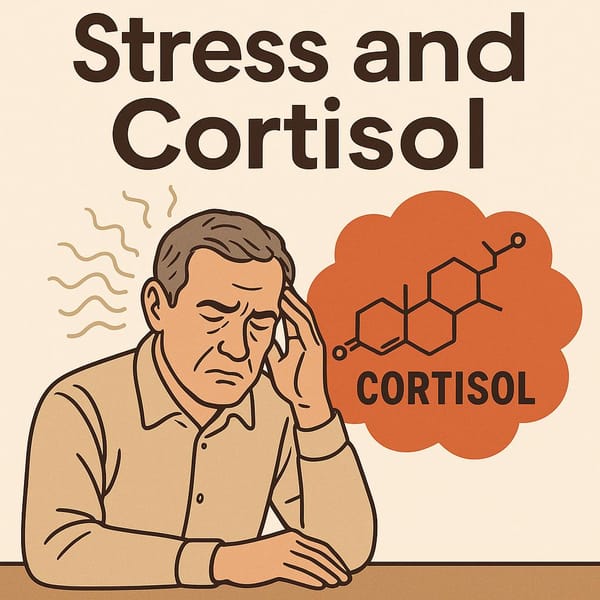Boosting BDNF for a Healthy Brain: Essential Tips for Individuals Aged 50+
Discover how to boost BDNF levels to protect brain health and reduce cognitive decline risks after age 50 through exercise, nutrition, and stress management.

Introduction
As we age, our bodies undergo numerous changes—particularly the gradual deterioration of the nervous system and brain, which may lead to memory loss and increased risk of neurological conditions. For those aged 50 and above, it is crucial to pay attention to brain health. One topic that has gained significant scientific interest is BDNF (Brain-Derived Neurotrophic Factor), a vital protein responsible for supporting the growth, repair, and functioning of neurons in the brain. This article provides a detailed overview of BDNF and practical methods to stimulate it, helping to keep your brain robust and fully functional in your 50s and beyond.
What is BDNF?
BDNF (Brain-Derived Neurotrophic Factor) is a protein categorized under Neurotrophic Factors—a group of proteins that plays a significant role in the growth, development, and maintenance of neurons 1. It promotes the formation of strong neural connections and enhances communication between neurons, thereby improving learning, memory, and the brain’s ability to adapt (brain plasticity).
Multiple studies have shown that low BDNF levels may be linked to several neurological and mental health issues, such as depression, dementia, and Alzheimer’s disease 2. Hence, maintaining adequate BDNF levels in the body is crucial to preventing and reducing various forms of brain-related decline.
The Importance of BDNF for Those Aged 50+
1. Prevention and Delaying Cognitive Decline
As we enter our 50s, the risk of cognitive decline increases. BDNF helps maintain flexibility and connectivity among neurons. Sufficient BDNF levels help the brain protect itself and repair damage more quickly, reducing the likelihood of developing conditions associated with age-related decline.
2. Supporting Mental and Emotional Health
Research also indicates BDNF’s role in regulating neurotransmitters and hormones linked to mood. Individuals with low BDNF levels may be more susceptible to depression and anxiety. Maintaining proper BDNF levels can help foster a positive outlook and potentially lower the risk of mood disorders.
3. Enhancing Memory and Learning
Short-term memory loss or forgetfulness is common as we grow older. Elevated BDNF levels strengthen neuronal connections, aiding in the learning of new information and the retention of important details more effectively.
4. Promoting the Generation of New Neurons
Neurogenesis, particularly in the hippocampus—vital for long-term memory—decreases with age. Properly stimulated BDNF levels may help retain some degree of this neuroplasticity.
Ways to Boost BDNF Through Daily Activities and Lifestyle
1. Engaging in Appropriate Exercise
Physical activity is one of the most effective methods for increasing BDNF, especially aerobic exercises such as brisk walking, light jogging, cycling, or swimming. These activities improve circulation and enhance oxygen and nutrient delivery to the brain 3.
- Tip: Aim for 30–45 minutes of continuous exercise at least 3–4 days a week to see a clear boost in BDNF levels.
2. Consuming a Brain-Healthy Diet
Nutrition plays a vital role in maintaining a robust brain. By choosing nutritious foods, you can support BDNF production and overall neuronal health:
- Omega-3 Fatty Acids: Found in salmon, mackerel, sardines, and flaxseeds. Research indicates omega-3s can enhance neuron function and encourage BDNF release 4.
- High-Quality Protein: Protein aids in building and repairing cells, including neurons. Consider lean sources like fish, chicken, eggs, tofu, and various legumes.
- Polyphenols: Found in fruits and vegetables such as blueberries, strawberries, grapes, and leafy greens. These antioxidants protect neurons from oxidative stress.
- Limit Sugar and Processed Foods: High intake of sugar and trans fats can disrupt metabolic processes and diminish BDNF over time.
3. Getting Adequate Sleep
Sleep is essential for the body and brain to repair and restore. Research shows that insufficient or poor-quality sleep can lower BDNF levels 5, adversely affecting memory, mood, and concentration.
- Tip: Maintain a consistent sleep schedule, and avoid screens or electronic devices at least one hour before bedtime.
4. Practicing Meditation and Stress Management
Chronic stress can reduce BDNF levels. Mindfulness practices like meditation, controlled breathing, yoga, or leisurely walks in nature can help decrease stress and indirectly support healthier BDNF levels.
- Technique: Spend 10–15 minutes daily in a calm environment practicing mindfulness or other relaxation methods.
5. Continuous Learning
The brain functions much like a muscle: the more you train it, the stronger it becomes. Learning new skills such as playing a musical instrument, studying a new language, or solving puzzles (e.g., sudoku, crosswords) can help increase BDNF and support healthy brain plasticity 6.
Supplements and Nutrients for Supporting BDNF
For individuals who struggle to get adequate nutrients from their diet, supplements may be an option. However, it is imperative to consult a doctor or specialist for guidance to avoid potential allergic reactions or interactions with other medications.
- Omega-3 Supplements: For those who rarely eat fish, quality fish oil supplements can help boost omega-3 intake.
- Vitamin B Complex: Particularly vitamins B6, B9 (folate), and B12, which support neurotransmitter synthesis and overall nervous system health.
- Antioxidants: Vitamins E, C, or green tea extract can help maintain healthy brain function by combating oxidative stress.
Sample Program to Stimulate BDNF in Both Body and Mind
- Exercise Three Days a Week
- Monday: Brisk walk or light jog for 30 minutes.
- Wednesday: Cycling or swimming for 30 minutes.
- Friday: Aerobic dance or a favorite sport for 30–45 minutes.
- Meditation or Yoga Twice a Week
- Tuesday and Thursday: 20–30 minutes of combined yoga and mindfulness to reduce stress and relax the brain.
- Brain Training Activities
- Saturday: Learn a new language or practice a musical instrument for one hour.
- Sunday: Engage in puzzle-based activities like sudoku or crosswords for 30 minutes.
Advantages of Lifestyle Modifications to Support BDNF
- Reduced Risk of Alzheimer’s and Parkinson’s: Maintaining high BDNF levels can potentially lower the risk of neurodegenerative diseases.
- Enhanced Memory and Cognition: Support of BDNF allows the brain to adapt more quickly to new data and situations.
- Mood Improvement and Decreased Depression: Proper BDNF levels correlate with optimal neurotransmitter balance, promoting better emotional health.
- Overall Physical and Cognitive Fitness: Exercise-induced BDNF benefits both body and mind, especially when combined with good nutrition.
Precautions and Additional Recommendations
- Consult a Healthcare Professional: Individuals with pre-existing conditions or those taking medications should seek medical advice before making any major lifestyle changes.
- Avoid Chronic Stress: Ongoing stress can lower BDNF and accelerate cognitive decline.
- Embrace Variety: Engage in a diverse range of brain-stimulating activities for maximum benefit.
- Refrain from Exaggerated Claims: While BDNF is crucial, it is not a cure-all. It is one aspect of holistic brain health.
Conclusion
Keeping your brain healthy at 50 and beyond is entirely feasible. Focusing on BDNF stimulation through regular exercise, a balanced diet, adequate sleep, meditation, and continuous learning can help preserve cognitive function and overall wellbeing. Coupled with medical advice tailored to your needs, these strategies can effectively and safely promote a resilient brain.
Should you be looking for ways to maintain peak brain performance, start by adjusting your habits to enhance BDNF. Consult health professionals for personalized plans that ensure optimal benefits and safety.
Footnotes
- Park, H. & Poo, M.-m. (2013). Neurotrophin regulation of neural circuit development and function. Nature Reviews Neuroscience. ↩
- Erickson, K. I., et al. (2010). Exercise training increases size of hippocampus and improves memory. Proceedings of the National Academy of Sciences. ↩
- Cotman, C. W. & Berchtold, N. C. (2002). Exercise: a behavioral intervention to enhance brain health and plasticity. Trends in Neurosciences. ↩
- Gómez-Pinilla, F. (2008). Brain foods: the effects of nutrients on brain function. Nature Reviews Neuroscience. ↩
- Xie, L., et al. (2013). Sleep drives metabolite clearance from the adult brain. Science. ↩
- Green, C. S. & Bavelier, D. (2008). Exercising your brain: a review of human brain plasticity and training-induced learning. Psychology and Aging. ↩



